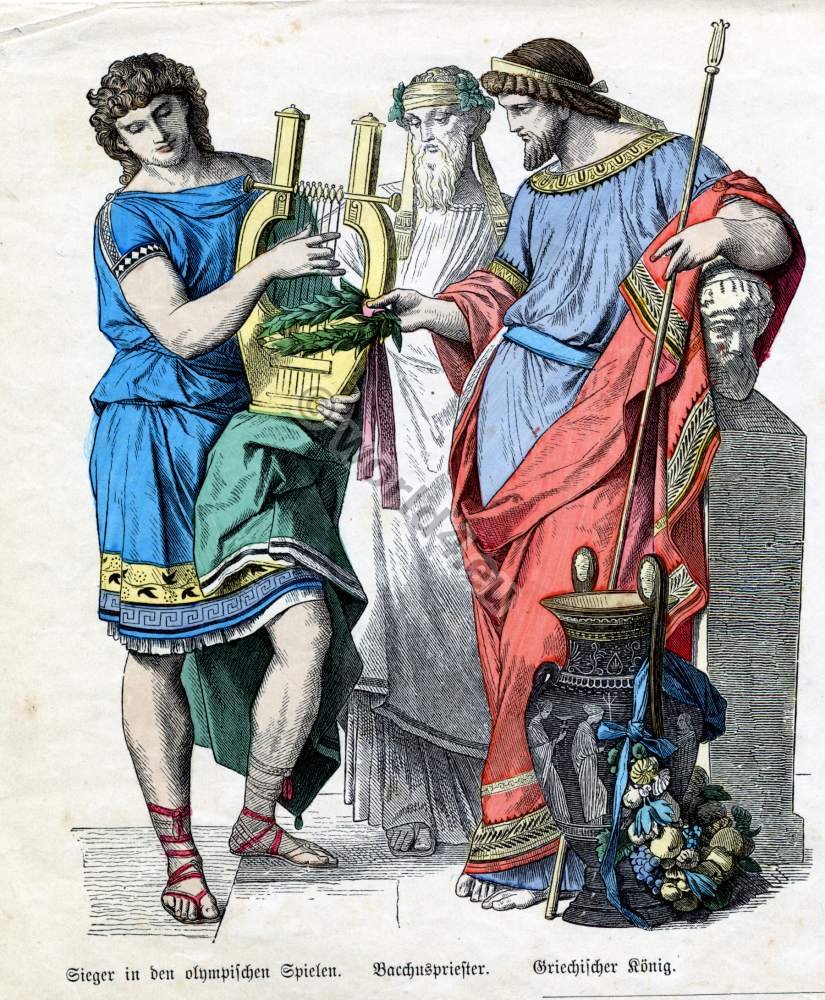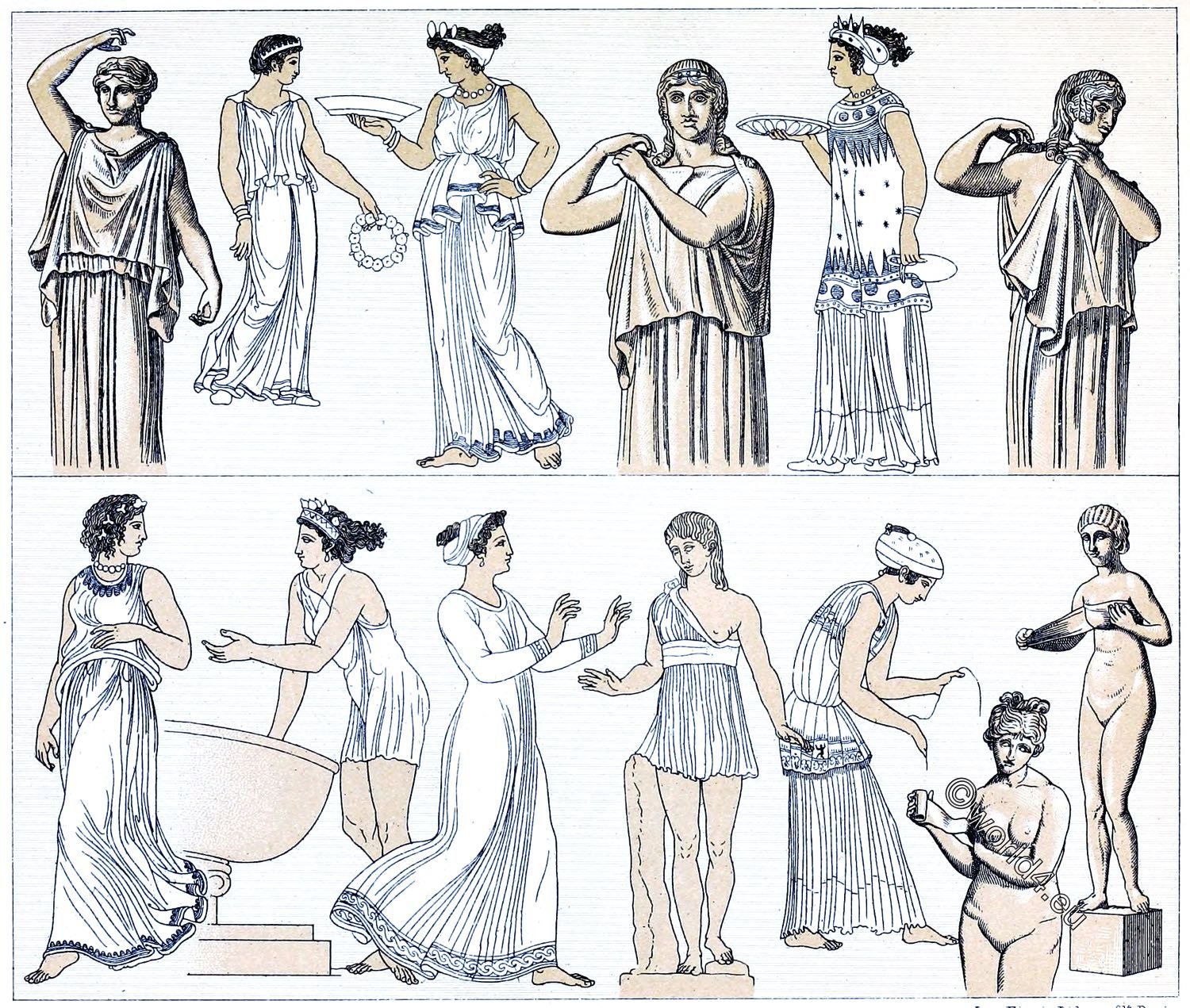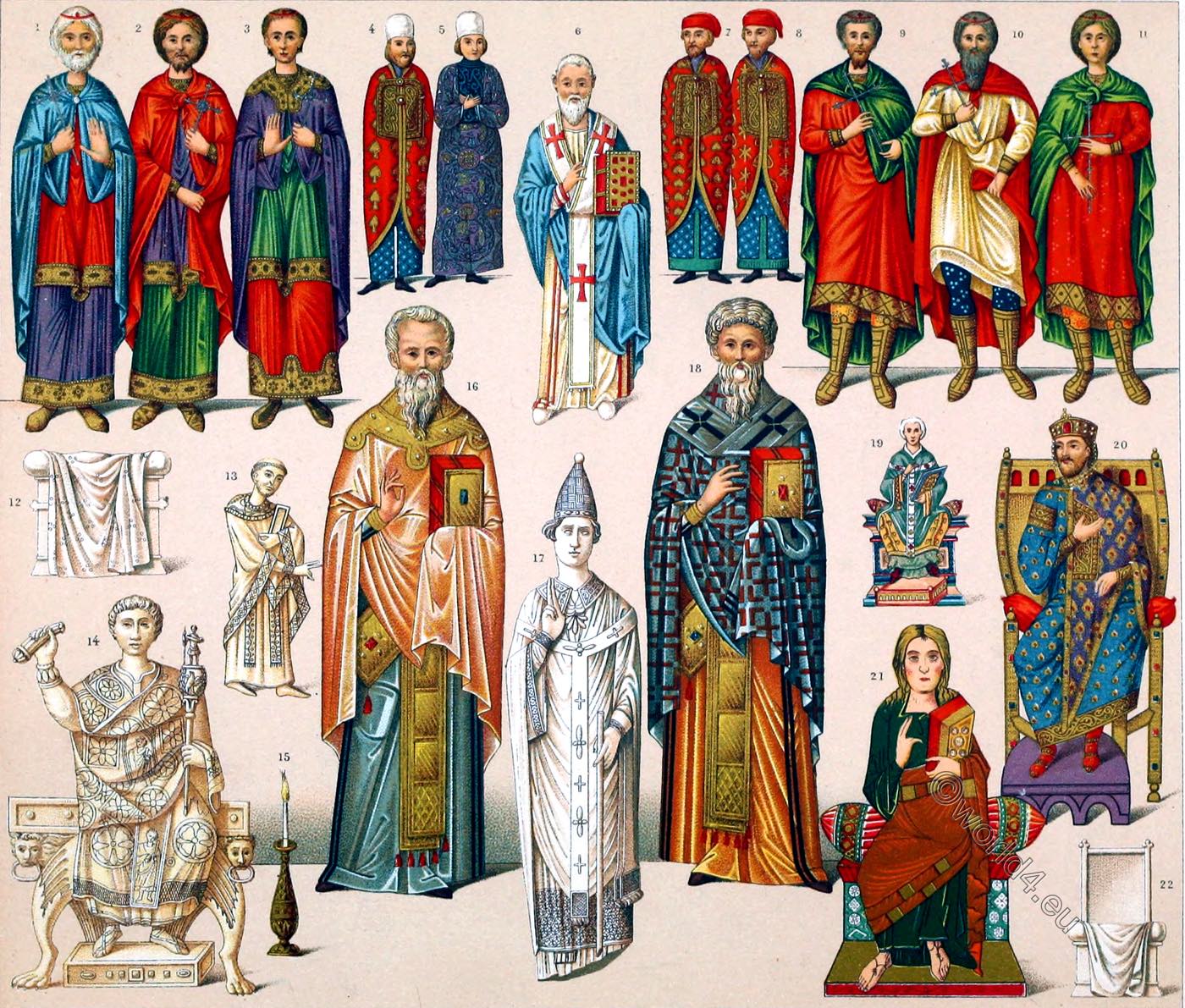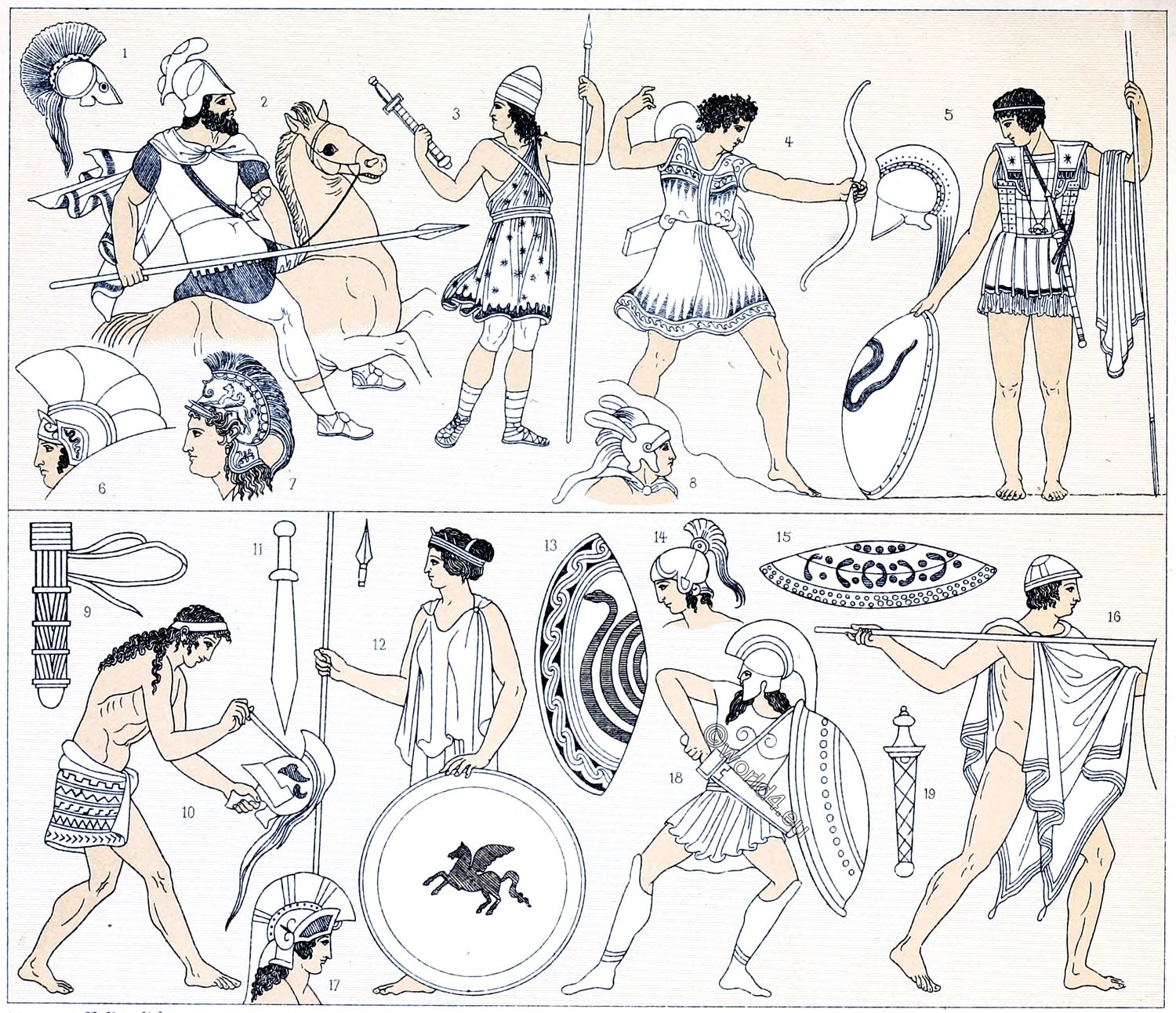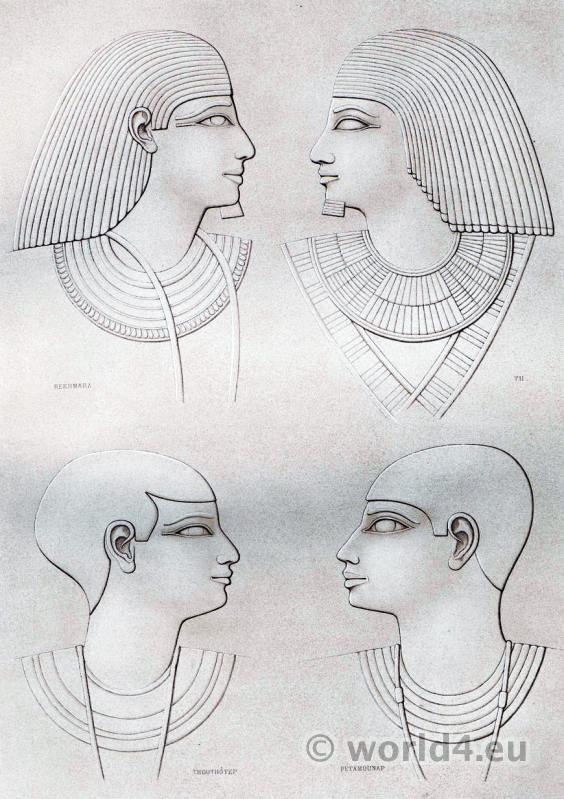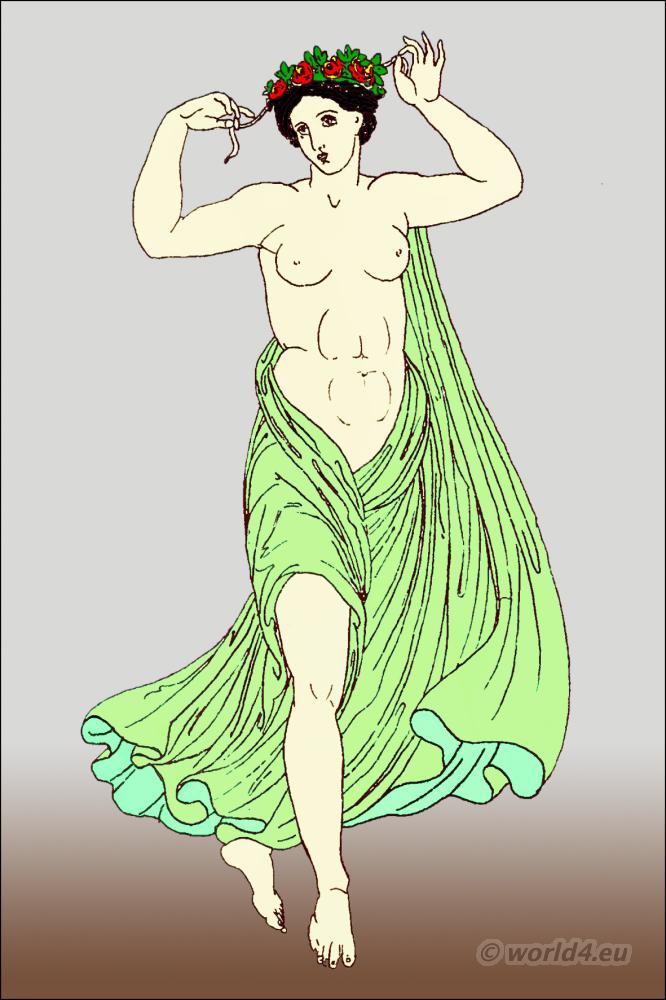Plate VI.
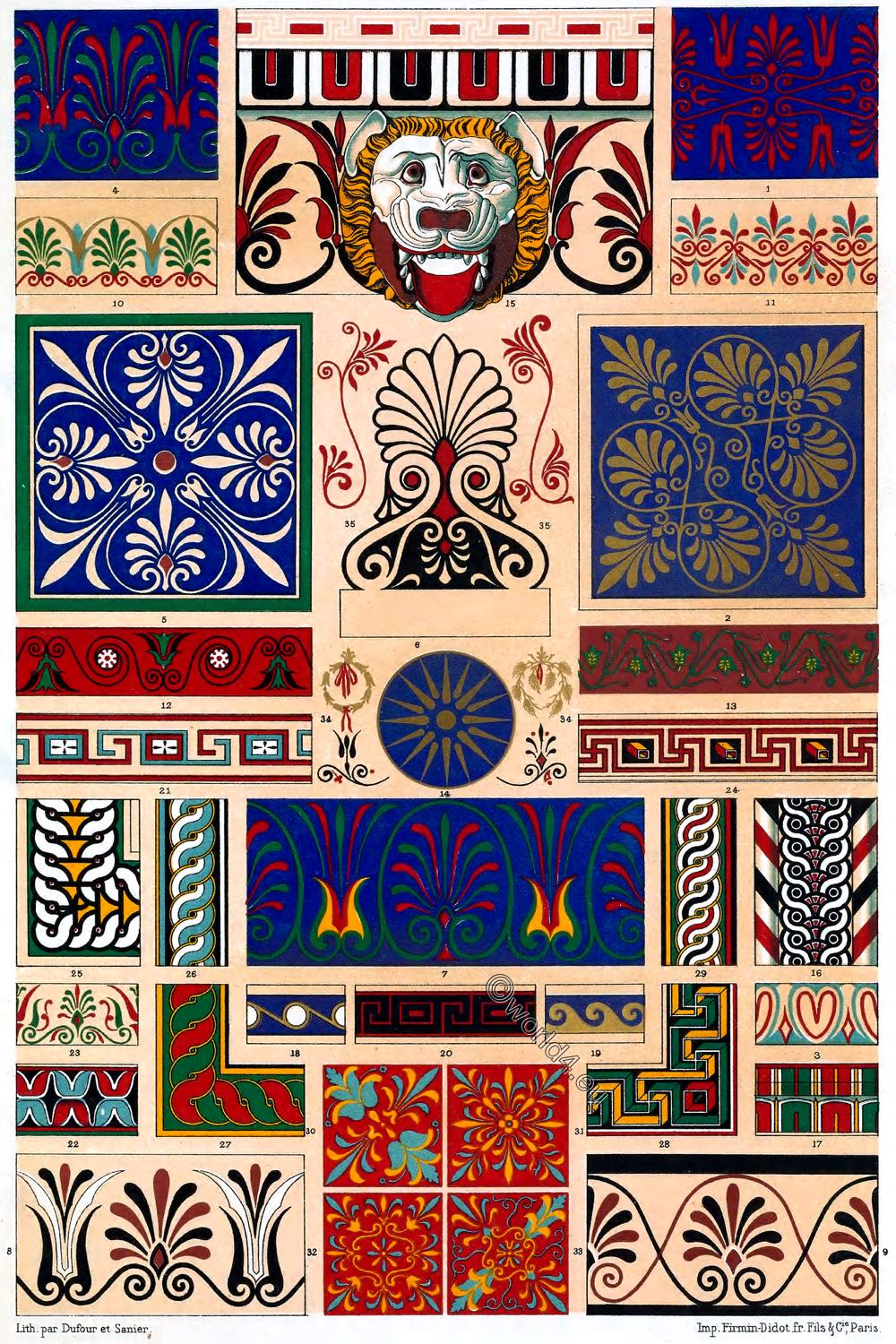
GREEK AND GRECO-ROMAN ANTIQUITIES.
SPECIMENS OF POLYCHROMATIC DECORATION.
THE accompanying plate contains numerous specimens of polychromatic decoration, taken from various periods of Greek Art, commencing from the date of the monuments in Egina, or the Parthenon, down to that which may be called the Greco-Roman period. The colors are copied from sketches by the most competent artists.
The following is a list of the subjects in the plate, with references to the authorities from which they are selected:—
- Nos. 1, 2, 3. — Frieze and corona ornaments, from the restoration of the Parthenon, by M. Paccard. (Ecole cles Beaux- Arts; Roman section.)
- No. 4. — Ornaments from the frieze of the Temple of the Wingless Victory at Athens. (Lebas, Voyage archeologique en Groce et en Asie Mineure, I., pi. 8, No. 1.)
- No. 5. — Ancient fragment from a panel of a corona. (Lebas, id., II., pi. 6, No. 1.)
- No. 6. — Antefix from the Temple of the Wingless Victory. (Lebas, id,, I., pi. 6.)
- Nos. 7, 8, 9. — Ancient fragments from different monuments at Athens. (Lebas, id., I., pi. 8, No. 4; II., pi. 5, Nos. 1 and 11.)
- No. 10. — Decorations over the entrance to the Temple of Minerva Polias at Athens, from the restoration of that monument by M. Tetas. (Ecole des Beaux-Arts: Roman section.)
- No. 11. — Frieze ornament on the Temple at Paistum, from the restoration by M. Thomas. (Ecole des Beaux-Arts : Roman section.)
- Nos. 12, 13. — Ornament on the Temple of Jupiter Panhellenius, at JEgina, from the restoration by M. Gamier. Exterior (12) ; interior (13). (Ecole des Beaux-Arts : Roman section.)
- No. 14. — Star from the Propylrea. (Lebas, Hittorff, etc.)
- No. 15. — Cymatium, forming a gutter, found among the ruins of a temple at Metapontum. ( Metaponte , par M. le due de Luynes et F. S. Debacq, pi. 7.)
- No. 16. — Face and soffit of an ornament in earthenware, serving as a covering for abeam, found at Metajiontnm. (Id.,
pi. 8.) - No. 17. — Painted mouldings. (Hittorff, Architecture polychrome chez les Grecs, pi. 9, fig. 10, p. 767.)
- Nos. 18, 19. — Vitruvian scrolls.
- Nos. 20, 21. — Meanders.
- No. 22. — Painted ornaments on a sarcophagus found at Girgenti, (Hittorff, Architecture polychrome, pi. 9, p. 767.)
- No. 23. — Coping of wall, and ceiling in the Temple of Nemesis at Rhamnus. (Hittorff, id., pi. 10, fig. 9, p. 768.)
- No. 24. — Fragment of mosaic-work found in Sicily. (Hittorff, id., pi. 5, fig. 5, p. 761.)
- Nos. 25, 26, 27, 29. — Interlaced ornaments. (Greco-Roman style.)
- No. 28. — Meanders. (Greco-Roman style.)
- Nos. 30, 31, 32, 33. — Ornaments in terra-cotta found at Pallazolle (Hittorff, pi. 7, fig. 1, 2, 3, p. 764), with the colouring given by the same author in his restoration of the Temple of Empedocles (pi. 2.)
- No. 34. — Ornaments. (The same restoration, pi. 3.)
- No. 35. — Palm leaves.
Source: Polychromatic ornament by Auguste Racinet. London, H. Sotheran and Co., 1877.
Related
Discover more from World4 Costume Culture History
Subscribe to get the latest posts sent to your email.

